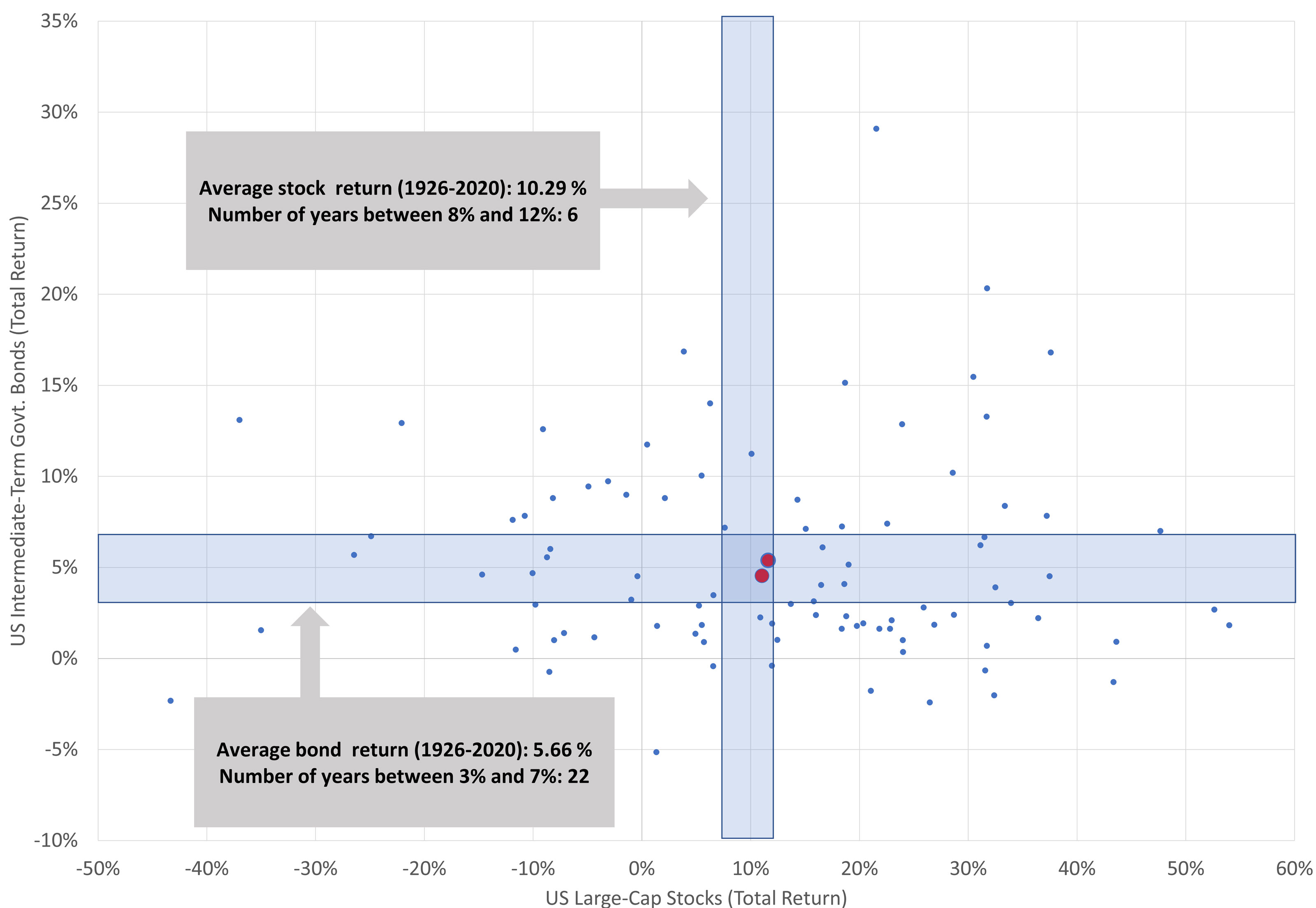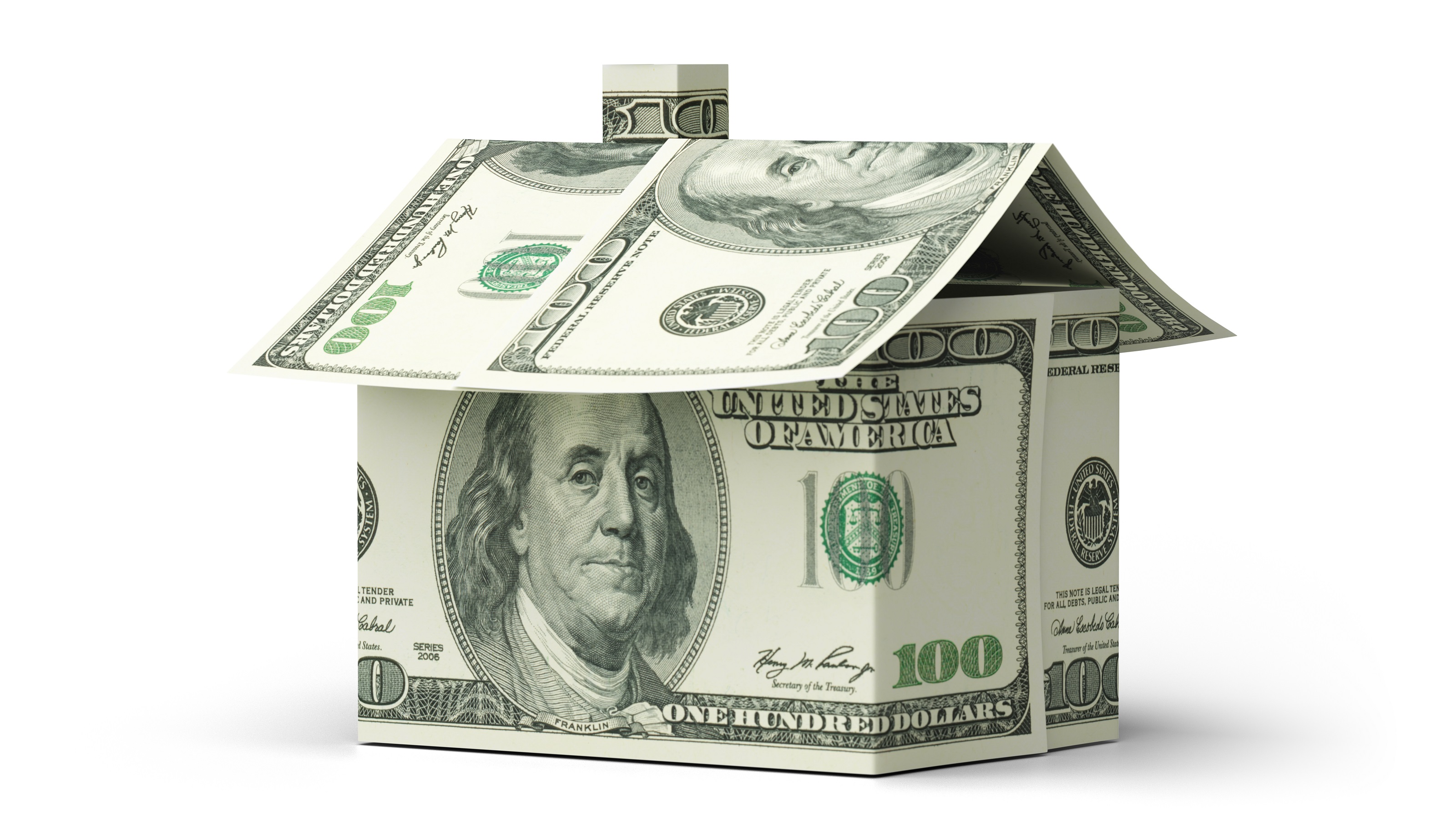Bond Advice for Today's Market: Think Big Picture
A bad day for stocks is often worse than a bad YEAR for bonds. Investors need to remember that right about now.


There is an old joke that some statisticians tell, that “a person with their head in an oven and their feet in the freezer is comfortable — on average.” Statisticians are not known for their sense of humor (clearly), but the joke is an effective warning about some of the shortcomings of relying on averages.
Statistically, a simple average camouflages extremes within its sample data. And, while the statistician’s joke is somewhat extreme, it is no less extreme than the actual returns in the long-run average annual returns for stocks and bonds that set many investors’ return expectations.
What’s an 'average' annual return anyway?
If quizzed, it is likely that many investors would estimate the average annualized returns for U.S. stocks and bonds to be about 10% and 5%, respectively. Those averages are composed of decades of returns and describe history perfectly. However, although they describe the average annualized returns, they are a far cry from the typical or "average" experience. In fact, in only two years from 1926 through 2020 did both the stock and bond market deliver returns within 2% (+/-) of their historical averages (see Figure 1).

Sign up for Kiplinger’s Free E-Newsletters
Profit and prosper with the best of expert advice on investing, taxes, retirement, personal finance and more - straight to your e-mail.
Profit and prosper with the best of expert advice - straight to your e-mail.
Figure 1: Annual stock and bond returns, 1926-2020

In 2021, U.S. stocks gained 25.7%, while U.S. bonds lost 1.5%.* While it is fair to say that it was a great year for stocks, is it fair to say that it was a bad year for bonds because they didn’t return their 5.7%* average? Probably not. The only thing rarer than a year with “average” returns might be a year that investors appreciate their bond allocations amid a bull market for stocks.
For those of you thinking about abandoning bonds, here are some ideas that may help:
A bad day for stocks is often much worse than a bad year for bonds.
While investors prefer gains to losses, they also prefer small losses to big losses. While far from being predictive, Figure 1 demonstrates that negative returns in bonds have tended to be both infrequent and modest. In fact, the bond market’s worst annual return was a loss of 5.1% in 1994. However, the stocks of the S&P 500 index have posted daily losses that bad or worse 25 times since 1926.
Sometimes, the further the distance, the clearer the picture.
Often, it’s hard for investors to see the benefits that high-quality bonds can add to their portfolios, especially when the returns they are posting are modest — or even modestly negative. And today, concerns for higher interest rates due to higher-than-expected inflation are making it even more challenging for investors to ignore some pundits’ suggestions that holding bonds is a bad idea.
I was given a magnifying glass when I was young, and I started looking at everything through it. Eventually, I looked at the Sunday comics and realized that for all I saw, I wasn’t seeing everything. The cartoons were nothing but a variety of colored dots! Magazine photos, too. It made me wonder how much else I was missing because I wasn’t looking closely enough. Now, I realize that when I was close enough to see the dots, I missed the bigger picture – literally.
Similarly, the dots in Figure 1 paint a picture that’s easy to overlook when you’re too narrowly focused: The principal benefit of investment-grade bonds isn’t their frequency of positive returns but the infrequency of large, negative returns. And, yes, if the returns in Figure 1 were inflation-adjusted, the frequency of negative returns for both bonds and stocks would increase. However, that would not change what Figure 1 tells us: High-quality bonds in a portfolio can help moderate the volatility of stocks.
The bottom line: Keep your eye on the big picture.
A well-diversified portfolio can benefit from bonds: More likely than not, a bad year for bonds will be much better than a bad day for stocks. While that certainly won’t insure your portfolio against losses, it can certainly help moderate the losses when the markets turn intemperate.
Having a well-diversified portfolio that includes an allocation to high-quality bonds can help keep a bad day in the stock market from turning into a bad year for your portfolio.
* Stock performance as measured by the CRSP U.S. Total Market Index. Bond performance as measured by the Bloomberg U.S. Aggregate Float Adjusted Index. Bond average is a geometric mean return for the Ibbotson® SBBI® U.S. Intermediate-term (5-Year) Government Bonds (Total return).
Get Kiplinger Today newsletter — free
Profit and prosper with the best of Kiplinger's advice on investing, taxes, retirement, personal finance and much more. Delivered daily. Enter your email in the box and click Sign Me Up.

Don Bennyhoff, CFA®, serves as the Chairman of the Investment Committee and Director of Investor Education at Liberty Wealth Advisors, a $1.7B RIA. An industry expert who spent over 22 years at The Vanguard Group, Don was a Founding Member of Vanguard’s Investment Strategy Group, and served as a Senior Investment Strategist.
-
 6 Stunning Waterfront Homes for Sale Around the US
6 Stunning Waterfront Homes for Sale Around the USFrom private peninsulas to lakes, bayous and beyond, Kiplinger's "Listed" series brings you another selection of dream homes for sale on the waterfront.
By Charlotte Gorbold Published
-
 Six Reasons to Disinherit Someone and How to Do It
Six Reasons to Disinherit Someone and How to Do ItWhether you're navigating a second marriage, dealing with an estranged relative or leaving your assets to charity, there are reasons to disinherit someone. Here's how.
By Donna LeValley Published
-
 Should You Still Wait Until 70 to Claim Social Security?
Should You Still Wait Until 70 to Claim Social Security?Delaying Social Security until age 70 will increase your benefits. But with shortages ahead, and talk of cuts, is there a case for claiming sooner?
By Evan T. Beach, CFP®, AWMA® Published
-
 Retirement Planning for Couples: How to Plan to Be So Happy Together
Retirement Planning for Couples: How to Plan to Be So Happy TogetherPlanning for retirement as a couple is a team sport that takes open communication, thoughtful planning and a solid financial strategy.
By Andrew Rosen, CFP®, CEP Published
-
 Market Turmoil: What History Tells Us About Current Volatility
Market Turmoil: What History Tells Us About Current VolatilityThis up-and-down uncertainty is nerve-racking, but a look back at previous downturns shows that the markets are resilient. Here's how to ride out the turmoil.
By Michael Aloi, CFP® Published
-
 Home Insurance: How to Cut Costs Without Losing Coverage
Home Insurance: How to Cut Costs Without Losing CoverageNatural disasters are causing home insurance premiums to soar, but don't risk dropping your coverage completely when there are ways to keep costs down.
By Jared Elson, Investment Adviser Published
-
 Markets Roller Coaster: Resist the Urge to Make Big Changes
Markets Roller Coaster: Resist the Urge to Make Big ChangesYou could do more harm than good if you react emotionally to volatility. Instead, consider tax-loss harvesting, Roth conversions and how to plan for next time.
By Frank J. Legan Published
-
 Why Homeowners Insurance Has Gotten So Very Expensive
Why Homeowners Insurance Has Gotten So Very ExpensiveThe home insurance industry is seeing more frequent and bigger claims because of weather, wildfires and other natural disasters.
By Karl Susman, CPCU, LUTCF, CIC, CSFP, CFS, CPIA, AAI-M, PLCS Published
-
 Going Through Probate? How to Find the Right Attorney
Going Through Probate? How to Find the Right AttorneyJust having the skills and experience to do the job isn't enough. The probate attorney you hire needs to have the right temperament for your particular case.
By John R. Silva, Esq. Published
-
 Widow's Penalty: Three Ways to Protect Your Finances
Widow's Penalty: Three Ways to Protect Your FinancesHigher Medicare premiums, smaller Social Security payments, bigger tax bills … Financial changes can hit hard when a spouse dies. How to counter the blow.
By Ashley Terrell, IAR Published